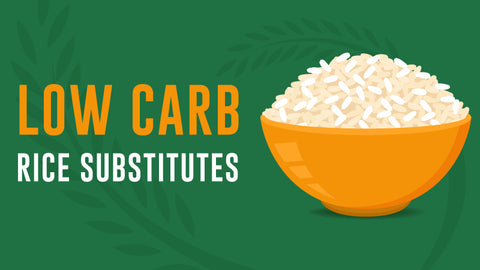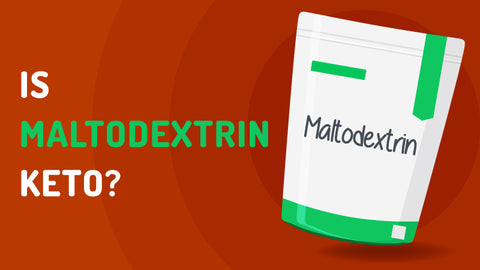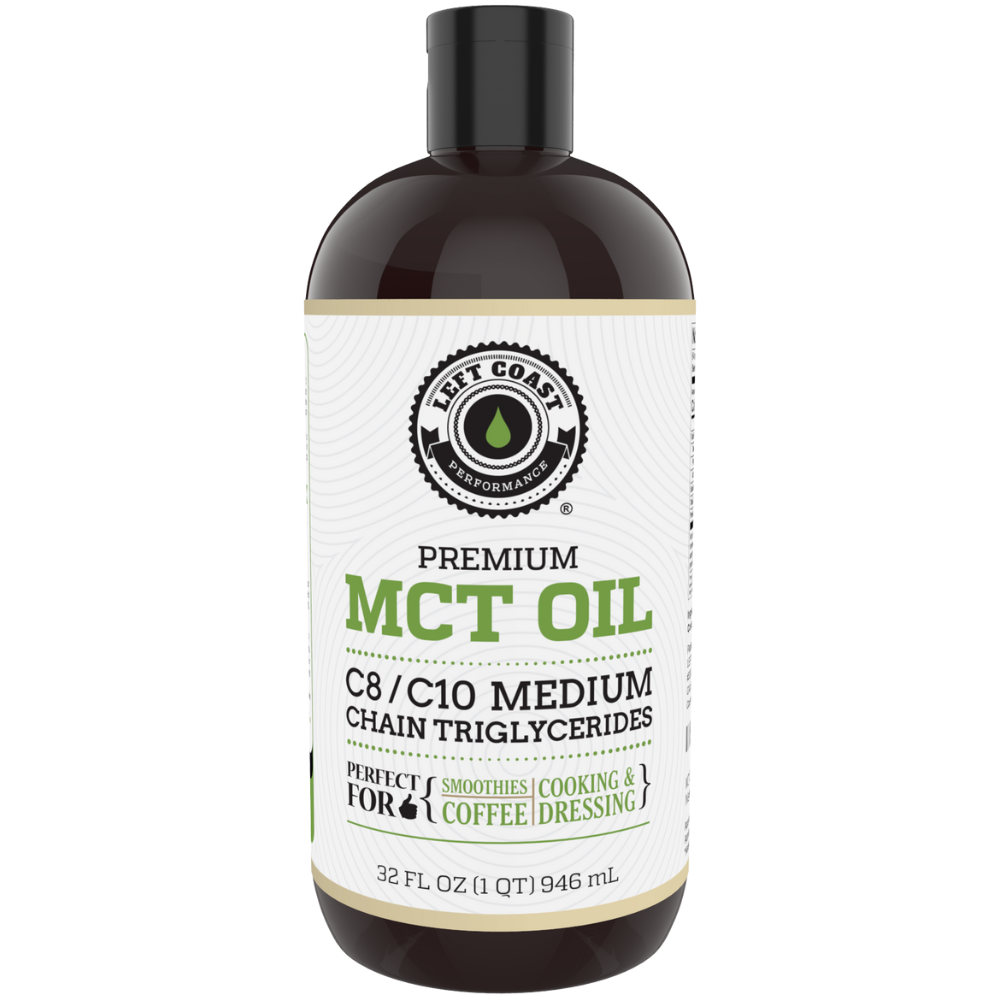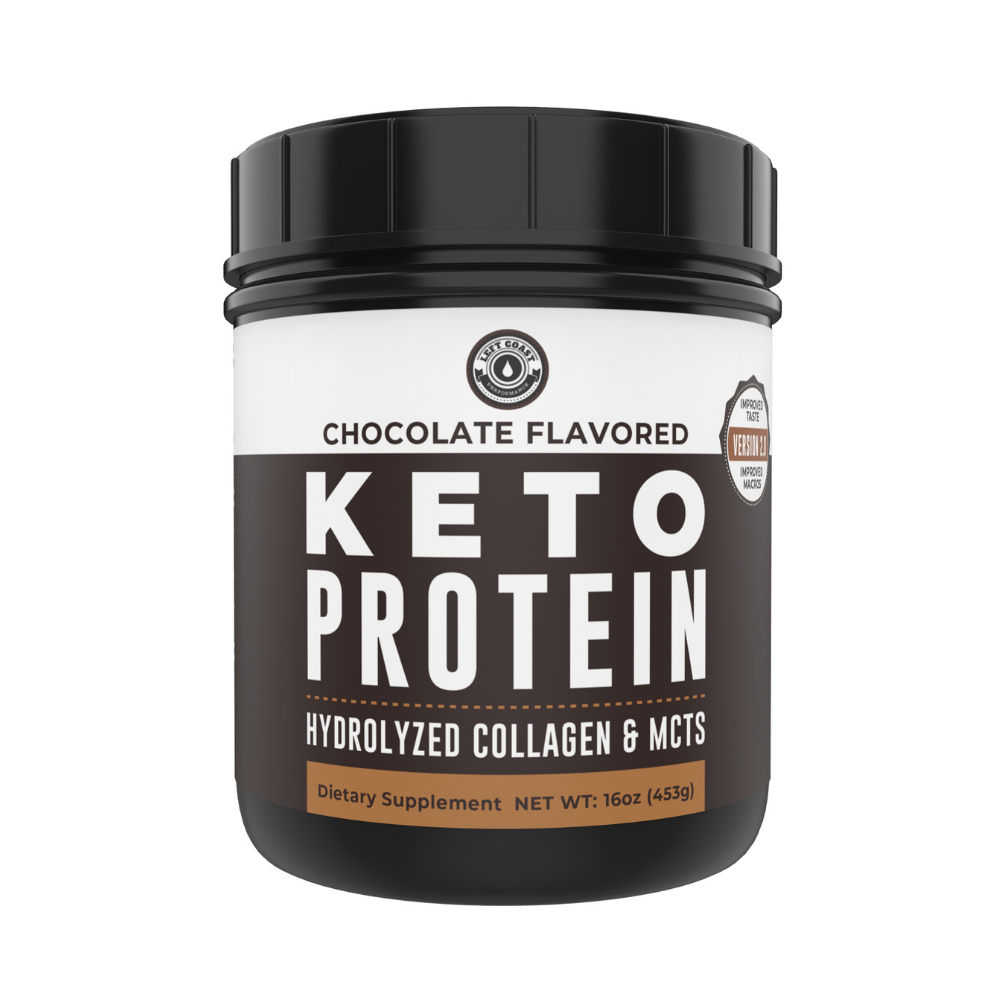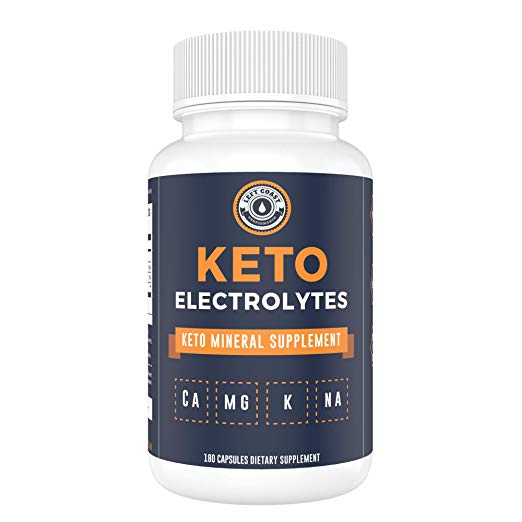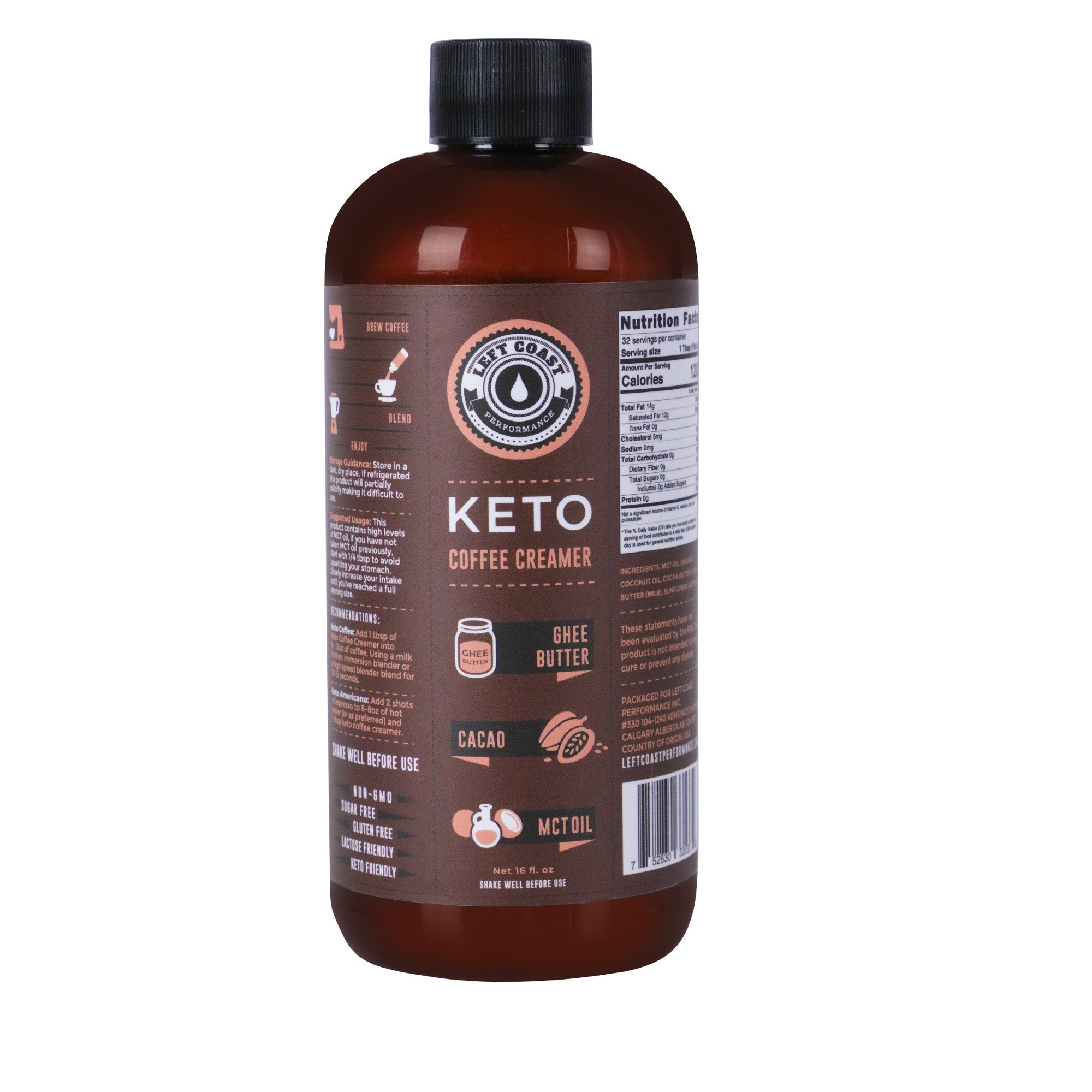How Much Protein Should You Eat On A Keto Diet?

on October 10, 2019
Protein intake on a keto diet is a bit of a controversial topic.
For a standard keto macronutrient breakdown, 15-25% of your daily calories should come from protein. This translates to between 75-125 grams of protein a day for someone on a 2000 calorie diet. Most people can conveniently meet this requirement by eating 6 ounces of protein with each meal.
The Acceptable Macronutrient Distribution Range (ADMR) for protein is between 10-35% — Keto still fits within this range. However, many avid keto followers restrict their protein intake.
There is a belief that consuming too much protein can kick you out of ketosis through a process called gluconeogenesis. Gluconeogenesis is a pathway for the body to make glucose from protein and other compounds.
The concern here is that the new glucose made through gluconeogenesis can raise your blood sugar levels and reduce the production of ketones — derailing your keto efforts.
In this article, we’ll bust the myths surrounding gluconeogenesis and break down how much of an impact increasing your protein intake has on a ketogenic diet.
Why Does The Body Need Protein?
Protein is made up of building blocks called amino acids. The body can make carbs and fat if it’s starved of these macronutrients, but it absolutely cannot manufacture certain amino acids on its own. It’s the only macronutrient the body cannot make on its own.
The body needs protein for almost every bodily function and is found in every cell. Here are a few examples of crucial processes protein plays a part in:
- Build and repair tissues and organs
- Transports nutrients
- Creates enzymes needed for multiple chemical reactions
- Makes up immune cells that help to fight off infection
As you can see, you must eat enough protein every day to maintain a healthy diet.
How Much Protein Do You Need for Keto?
The Recommended Dietary Allowance (RDA) for protein is 0.8 grams/kg (or 0.36 g/lbs), according to the 2015-2020 US Dietary Guidelines. The RDA recommends 46 grams per day for women and 56 grams per day for men.
The RDA recommendations are problematic because it uses a “reference” man and woman for its macronutrient calculations, and these metrics don’t reflect the average American. This reference man weighs 154 lbs, and the reference woman weighs 125 lbs.
According to the National Center for Health Statistics, the average woman weighs 168 lbs and the average man 195 lbs. This means the RDA guidelines are simply too low for most people.
Additionally, RDA is calculated based on the amount of protein required to prevent muscle loss in a sedentary person — It doesn’t account for physical activity, age, metabolism, illness, or any other factors that may increase protein needs.
The RDA is not a practical guide for maintaining optimal muscle mass or support an active lifestyle. The bottom line is that the RDA is simply too low for most people.
How much protein you need to eat should be individualized and based on your personal goals, whether you are on keto or not.
On the keto diet, protein can be extremely beneficial for weight loss and increasing muscle mass. Therefore, it is best to eat more, not less protein on keto.
There is no specific protein requirement for keto. The amount recommended is based on a percentage of your total calorie intake — Aim for 15-25% of your calories to come from protein.
If you are trying to lose weight or gain muscle, you may have slightly different requirements based on your goals. It may be helpful to use a keto calculator as a guide for your macronutrient intake to reach your desired outcome.
Protein Requirements for Weight Loss on a Ketogenic Diet
While on keto, upping your protein intake can help with weight loss as protein is the most satiating macronutrient.
A 2005 study put subjects on a weight maintenance diet that was either low in protein (15% of total calories) or high in protein (30% of total calories). Those on the high protein diet spontaneously ate around 441 calories less with no real effort to reduce calories.
Researchers believe that the calorie reduction may be related to the impact that a high protein diet has on leptin — a hormone that inhibits hunger.
Although it is understood that protein helps with weight loss, the exact amount needed to optimize weight loss is still up for debate and depends on a variety of factors.
Active people may benefit from eating between 1.8 - 2.7 grams of protein per kilogram (0.82 - 1.23 g/lbs) of body weight when trying to lose weight.
For people who are sedentary and overweight, 1.2 - 1.5 g/kg (0.55 - 0.68 g/lbs) may be more appropriate to promote weight loss while keeping calories under control.
If a person weighs 250 lbs, this translates to 135-170 grams of protein per day. If your goal with keto is weight loss, a focus on protein intake will make achieving that goal much more accessible.
If your main goal is weight loss, you still need to watch your calorie intake, even if the calories are coming from protein. Excess calories will lead to weight gain, no matter what the source.
Protein Requirements for Weight Gain or Muscle Gain on a Ketogenic Diet
If your goal is to gain a lean body mass, protein is the most critical macronutrient.
Muscles are made from protein. Without adequate protein, there are no raw materials available to build new muscle. Additionally, research has found that a low-carb diet can help preserve muscle mass.
To optimize muscle gain, aim to eat 1.2 - 1.7 g/kg of protein (0.55 - 0.77 g/lbs) per day.
With the help of a good meal plan, you can spread your protein out evenly throughout the day to give your muscles a steady dose of amino acids.
After your workouts, be sure to get some protein in you to give your body the fuel it needs to recover and build new muscle.
Can You Overeat Protein on Keto?
The answer is probably not.
Many people believe that gluconeogenesis can kick you out of ketosis, but this is unlikely to happen for several reasons.
Even if you never ate another carbohydrate again, the body needs small amounts of glucose to function.
Specific organs, like the liver, do not use anything other than glucose to fuel various metabolic functions.
The main goal of the body is to maintain homeostasis. Too little sugar (hypoglycemia) is just as harmful as too much sugar (hyperglycemia). The body needs some sugar to stabilize blood sugar.
That being said, the body doesn’t like to rely on gluconeogenesis unless it has to. It takes a lot of energy to make glucose from protein or other compounds, so the body readily switches over to ketones for energy when it can.
A 2013 study found that during a low-carb fast, it took approximately 8 hours for the body to produce 50 grams of carbs through gluconeogenesis. Of those 50 grams of carbs, only 3 grams came from the protein that had been consumed during that 8-hour window.
If you’re afraid that gluconeogenesis from protein will produce too many carbs and kick you out of ketosis, you can see that it is pretty unlikely to happen.
Unless you’re insulin-sensitive or are an insulin-dependent diabetic, you shouldn’t run into any issues with protein affecting your blood sugar.
However, there is some evidence that a high protein diet may be harmful to health.
A 2014 study evaluated the results of 32 studies on the health impact of high protein diets. They found that a diet high in protein could increase the risk of bone, liver, and kidney disorders, disrupt calcium balance, increase cancer risk, and speed up the progression of cardiovascular disease.
Although keto is higher in protein than other diets, it’s still considered a moderate protein diet. Therefore, as long as you aren’t binging on high protein foods, there is likely no major risk of overeating protein while on keto.
If you’re concerned about eating too much protein on a keto diet, you’ll need to increase your consumption of either fat or carbohydrates to meet your calorie requirements.
Tips for Eating Less Protein On a Keto Diet
Since increasing carbs too much might kick you out of ketosis, your main option is to increase fat.
Consider eating more low-carb nuts, like pecans or macadamia nuts. Coconut products can also be added to bump up your calories from fat, without adding too much protein.
Alternatively, you can opt for a vegetarian-based keto diet, which will decrease your protein consumption but may increase your carbs.
Unless you have a serious reason for limiting your protein intake while on keto, you would probably actually benefit from eating more protein, not less.
Can You Eat Too Little Protein on Keto?
As we’ve discussed, protein is necessary for satiety, helping with weight loss, and maintaining lean muscle on a keto diet. You can end up eating too little protein if you are overly focused on eating fat.
If you’ve been on the keto diet for several weeks and are still hungry all the time, you’re probably not getting enough protein. If you’re not overeating your calories (or carbs) and are not losing weight, you are also probably not eating enough protein.
The keto diet works for weight loss because of the increase in protein.
Protein is the most satiating macronutrient and is one of the reasons for the appetite suppression people experience. It can be argued that protein is almost as important as fat while eating keto.
How to Get More Protein On a Keto Diet
An effective meal plan will help you reach the right amount of protein for your keto diet.
In order to ensure you’re getting enough protein and more, make your protein choice at every meal and snack a priority. Make it a goal to eat at least 4-6 ounces of protein at every meal and 1-2 ounces at every snack.
Keep high protein foods that are easy to grab on hand. Foods like:
- Hard-boiled eggs
- String cheese
- Sliced deli meat
- Keto protein balls or bars
Meal prepping also helps ensure that you have the protein options you need. Cook 5-6 chicken breasts or steaks at the beginning of the week to serve with different meals. Cooking your protein all at once will save you time and make sure you get all your protein needs throughout the week.
High Protein Keto Diet
As a general overview, the ketogenic diet is low in carbs, high in fat, and moderate in protein — however, your protein intake will depend on your goals.
To sum up our earlier points, don’t be afraid to increase your protein intake. Protein consumption may help with weight loss — by helping you feel full for longer — and may increase lean mass by helping repair and build new muscle tissues.
Planning a keto high protein diet starts with a general understanding of your individual protein needs.
A keto calculator can help you get started. The calculator will determine your macronutrient distribution based on your goals, age, weight, and activity level for each day.
Once you know how much of each macronutrient you need, start planning your protein sources first.
Choose high-quality proteins source, sticking with organic and hormone-free sources, when possible. Select a combination of high fat and leaner protein choices, like those listed below, for variety and flavor. Fill in the rest of your diet with added fats and low-carb veggies.
After a week or two, you should begin to feel less hungry once you enter ketosis. If you’re still starving all the time, you may not be eating enough protein, or you’re eating too many carbs.
Consider tracking your intake for a few days to monitor how many calories, protein, carbs, and fat you’re eating — Adjust any macronutrient intake that needs tweaking.
If your goal is fat loss, give your body at least 30 days to adjust to this new lifestyle. Don’t just look at the number on the scale but take body measurements and track body fat.
If you haven’t lost any weight after 30 days, consider decreasing your fat intake and eating more protein — and be sure you’re not eating too many calories.
Although keto is a high-fat diet, calories still count. Fat is high in calories and can be easy to overeat. Protein contains fewer calories and can help you reach your weight loss goals because it leaves you feeling full longer.
High Protein Foods for A Keto Diet
Many foods high in protein are also keto-friendly. It shouldn’t be difficult to meet your protein and fat needs on a keto diet. When possible, choose fattier cuts of meat, so you don’t have to add any additional fat when cooking.
The Best Protein Sources for Keto:
- Beef (high-fat cuts or 80/20 ground beef)
- Pork (chops, bacon, ham)
- Poultry (dark meat)
- Fish (fatty and wild-caught, like salmon)
- Shellfish
- Organ meats
- Lamb
- Veal
- Whole eggs
- Full-fat dairy, (grass-fed)
If you prefer to eat less meat, with careful planning, you can still meet your protein needs while following a vegan keto diet.
The Best Vegan-Friendly Protein Sources for Keto:
- Tofu
- Tempeh
- Nuts and nut butters
- Coconut yogurt
- Cashew cheese
- Vegan cream cheese
- Low sugar plant milk
Just a note, a vegan keto diet is extremely restrictive and difficult to follow long term.
If you want to follow a keto diet without too much meat, consider adding dairy products and eggs into the mix to increase variety.
Keto Protein Powders
Keto protein powders are a convenient source for hitting your protein needs on a keto diet. There are many different types of keto-friendly protein powders on the market. A few of the popular ones include:
Whey protein
Whey is the liquid left over after making cheese. It’s a high-quality protein source with all nine essential amino acids. It’s been extensively studied for its ability to stimulate muscle growth and promote weight loss.
To make sure your whey powder is keto-friendly, look closely at the label to make sure it doesn’t exceed your personal carbohydrate goal. Whey concentrate products can be high in carbohydrates, so opt for whey isolate or hydrolysate instead.
Collagen
Collagen is pure protein — it doesn’t contain any carbohydrates or fat and is the most abundant protein in the body.
Collagen is needed to maintain the health of skin, joints, tendons, and ligaments. Look for hydrolyzed collagen to add to smoothies, teas, and coffees. Hydrolyzed collagen is broken down into smaller molecules, making it easier to absorb in the gut.
Plant-based protein
Plant-based protein powders are made from either a single type of protein, like pea or soy or a combination of plant-proteins. These can contain varying amounts of carbohydrates, depending on the formulation. Look for soy, pea, or rice protein isolate, which contains few or no carbs.
Bone Broth
Bone broth is another excellent keto-protein option. Bone broth is a dehydrated powder made from bones that have been simmered for 48-72 hours. The result is a versatile, low carbohydrate protein powder rich in minerals, electrolytes, and collagen.
It is an excellent option for those who practice intermittent fasting in addition to keto. You can drink it and not break your fast. It can also be mixed into food to boost protein content without increasing carbs.
Keto-Friendly Protein Shake Recipe
There are numerous protein shakes that don’t add extra carbohydrates to suit a ketogenic diet. We’ve rounded up our favorites this article, including a strawberry and a cocoa almond shake.
Here are a few other delicious choices:
- Chocolate Keto Protein Shake
- Keto Blueberry Smoothie
- Clean and Green Smoothie
- Keto Cinnamon Almond Shake
- Chocolate Peanut Butter Smoothie
Keto Protein Bars
When choosing a protein bar, look closely at the ingredients to make sure they contain less than 5 net carbs. Popular brands like Quest advertise the net carbs right on the front of the package, making low carb options easy to identify.
You can also make protein bars at home. Here are a few no-fuss recipes we enjoy:
Low Carb Protein Pancakes Recipe
Regular pancakes are not allowed on a keto diet, but that doesn’t mean you can’t enjoy home-made, low carb protein pancakes.
Low carb pancakes can be made with protein powder or a low carb flour alternative like almond flour. Add ingredients like cinnamon, vanilla extract, cacao powder, blueberries, or low carb sweeteners to make them so tasty you won’t even miss the carbs.
You can purchase keto diet-friendly pancake mixes if you don’t want to think about preparing ingredients. Or you can try one of these keto pancake recipes:
Vanilla flavor generally works best if you’re using protein powder for the pancakes since it adds a bit of sweetness.
Keto Protein Balls Recipe
Keto protein balls are another excellent snacking option that can increase your protein intake while tasting delicious.
Many keto balls are no-bake. They’re made by mixing nut butter and protein powder, then adding in desired toppings or flavors.
A few of our favorite protein ball recipes are:
- 4-Ingredient Keto Low Carb Peanut Butter Balls
- No-Bake Keto Chocolate Peanut Butter Balls
- Ketogenic Fat Balls
- Easy Keto Protein Balls
These balls can be made ahead of time and popped into a baggie for an easy mid-day on the go snack.
High Protein and the Keto Diet: What’s the Verdict?
There is no reason to be afraid of too much protein on keto. Contrary to popular belief, gluconeogenesis will not kick you out of ketosis because this process doesn’t efficiently produce glucose from protein or other sources. Your body will resort to ketones for energy before this happens.
There is little concern about it sabotaging your keto efforts, getting enough protein is extremely important to a healthy diet. Whether your goal is weight loss or you’re looking to gain lean muscle mass, increasing your protein intake is a reasonable adjustment on a ketogenic diet.
Protein helps with appetite suppression, which may decrease your calorie intake, and it helps to build and repair muscle tissue.
We’ve outlined some diet tips on excellent keto-friendly, high protein sources to help nourish your body to reach your goals. If you’re looking for more resources on maintaining a healthy ketogenic lifestyle, browse our blog for evidence-based research articles, nutrition tips, and delicious recipes.



